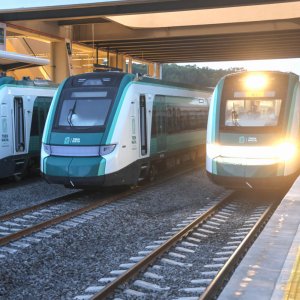Challenges and Opportunities in New Airport

STORY INLINE POST
Q: What were the most challenging elements Jones Day faced when closing the various NAICM deals?
A: Each deal was complex in its own way. For instance, with renewable-energy deals, the balance in off-taker profiles is important because the full financial risk is based on their strength. With the old self-consumption permits, PPAs were formed based on the financial strength of each of the off-takers, meaning that the banks would review the balance sheet of the off-takers and the termination rights outlined in the PPA. Since the revenues from the repayment of the financing come from the PPAs, they require strong termination rights and penalties. With the new system, we have an energy market and guidelines for compensation with a different risk factor. The most complex issue is how the banks will assess that risk.
The airport bonds provide great certainty to the market due to the fact that all the revenue comes from TUA directly from the airlines into a trust, which is the source of payment for financing. There is no way for the airport to misappropriate those funds. Terminal 2 of AICM was financed the same way and this method guarantees the financing banks are repaid.
Q: What advances have there been in interconnecting NAICM to the rest of the country and how viable are these projects?
A: GACM, along with the federal and Mexico City governments, have worked arduously to create viable proposals to interconnect NAICM with the rest of the country. There are various projects in the pipeline, including highways and metro line extensions, as well as the express train that will run from Metro Observatorio to NAICM. That is a project that will belong to the Mexico City government and not the federal government or NAICM. In the end, it will come down to the viability of the project and whether or not the costs will require government subsidies. At this point, there is no way for the government to subsidize the amount required. The Mexico-Toluca Interurban Train is a great project but requires a significant subsidy from the government.
Q: Apart from NAICM, what other types of projects would Jones Day like to participate in over the coming years?
A: We are extremely excited about the new gasoline transportation projects, as well as the high-voltage transmission lines. In toll roads, FONADIN has a large portfolio that requires modernization but private investment will be necessary. We might see toll road projects from FONADIN by the end of 2017. There are still many projects that need to be financed and these will probably be done through PPPs. The most important factor is that all of these facilities are completed at the same time because we do not want to be in a position where the government is paying for facilities that are not yet complete and therefore cannot be used.
A FIRM AT THE FOREFRONT OF NAICM FINANCING
Latin Finance’s Annual Project and Infrastructure Finance Awards 2017 recognized two deals overseen by Jones Day. Firstly, the Best Airport Financing and Best Transport Financing Award for the counseling the firm provided for NAICM through GACM. The firm helped the airport obtain an initial two-tranche 10- and 30-year 144A and Regulation S bond offerings for $2 billion, which was the biggest initial offering ever made for an airport transaction. The transaction obtained Baa1, BBB+, and GB1 from Moody’s, S&P and Fitch. Likewise, the firm carried out several other winning deals for the Mexico City Airport Trust. Also, the firm was ranked #1 in BTI’s Client Service Ranking for 2017. Since it was established 16 years ago, Jones Day has occupied the first place nine times. This year it managed to become the only firm that has ever achieved a “Best of Best” status in the 17 categories that compose the BTI survey for superior client service.























